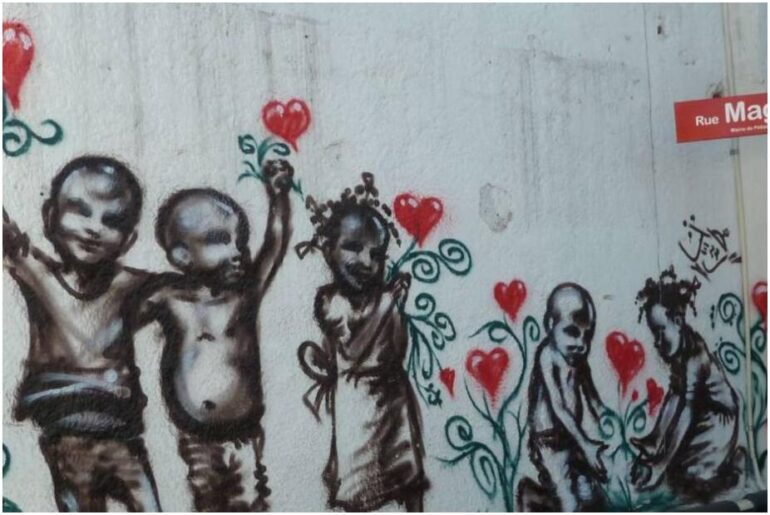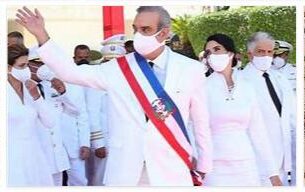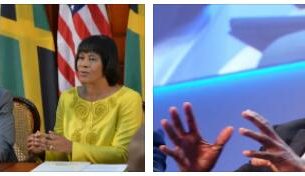According to a2zgov, Haiti’s culture is unique in the Caribbean. It is shaped on the one hand by the French influence of the educated elite, on the other hand by the African influence of the rural population. The Haitian Vodou is an essential source of inspiration in all forms of art. The result is a cultural identity that can be described as clearly Haitian and that is influenced by Christian proselytizing and withstood the American occupation at the beginning of the century. However, the increasing urbanization of society and the influence of modern media have modified traditional forms of cultural expression.
Carnival in Haiti
The Carnival, Haitian Carnaval, can undoubtedly be described as one of the most important cultural events in the country. It is an expression of the cultural identity of the Haitians and has its roots both in European customs of the Middle Ages and in the African traditions that came to Haiti with the slaves. Traditionally, the main event, called Mardi Gras, takes place on Shrove Tuesday. The carnival begins in January with smaller events that take place every Sunday.
In 2010, the year of the earthquake, the great carnival parade was canceled for the first time in Haiti’s history. Since then, the large national carnival event has been relocated to different cities in the province on the instructions of President Martelly in order to cause decentralization and a boom in the tourism industry in these cities. The carnival took place in Les Cayes in 2012 and 2017 and in Cap Haitien in 2013. While the 2014 national parade was held in the city of Gonaives under the motto “Tet Kole Pou Ayiti Pi Djanm” – Together for a stronger Haiti – the Karnelval 2015 returned to Port-au-Prince. In 2015 there was a serious accident with 16 dead and numerous injured when a moving van hit a power line. The Haitian government then canceled the last day of Carnival and imposed a three-day state mourning.
Another major carnival parade takes place in Jacmel each year, usually a week before the national carnival to avoid any overlap.
Painting
It is not surprising that painting and other forms of visual arts play an important role in a society that is largely incapable of reading and writing. The artistic forms of expression in Haitian culture are diverse and can be found, for example, in the form of brightly colored paintings, vodo flags embroidered with sequins, wood and metalwork. Traditionally, Haitian painting was an integral part of everyday culture as wall painting in shops or vodout temples. It has also become a household name in the established art world since the 1950’s, after the American art lover Dewitt Peters discovered this art form on his travels through the country and began to systematically promote the painters. Today Haitian painting is divided into different schools. The school of Cap Haitien, represented by the Obin family, stands out for its depiction of the everyday world, historical motifs and the use of pastel colors. The Saint Soleil School, on the other hand, is more oriented towards abstract motifs from Vodou. Numerous works of art were destroyed by the earthquake, including the Church of St. Trinité, which was known for its frescoes by well-known Haitian artists. The Center d’Art, which not only functioned as a gallery, but also represented an important meeting place and support center for Haitian artists, was also destroyed.
Literature
Until the beginning of the 20th century, Haitian literature was strongly based on French models, but soon developed its own unique and unmistakable aesthetic. It experienced its heyday in the course of the Négritude in the 30’s and 40’s of the last century. The best-known writers of this time are Jacques Roumain, Carl Brouard and Jean F. Brierre, who were inspired by Marxist ideas and surrealist modes of representation and who dealt thematically with their cultural and national identity. During Duvalier’s dictatorship, most of the intellectuals, including the majority of writers, fled abroad. Numerous writers like Edwidge Danticat or Dany Laferrière live and work abroad. Others, however, like Franketienne, deliberately stayed in Haiti. The literary language is essentially French, there are only a few publications in Haitian Kreyol.
Music
Haiti has a diverse musical culture, ranging from traditional folk music to Haitian rap. The traditional direction is represented by Rara, whose origins lie in Vodou and whose sound is dominated by drums and simple wind instruments. The traditional time for rare groups is around Easter. The Kompa is a more commercial style of music and related to the Dominican Merengue. One of the best-known Kompa interpreters, “Sweet Micky” – whose real name is Michel Martelly, was the President of Haiti from 2011 to 2016. The Rasin was created in the 1980’s, which is strongly based on vodou drums and the rarity tradition. The music style is represented by groups such as Boukman Eksperyans, RAM or Foula. In recent years, Rap Kreyol has developed its own style of contemporary music. The most famous Haitian musician who works abroad is currently the hip-hop star Wyclef Jean, who ran as a presidential candidate in 2010.




